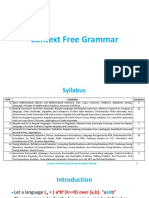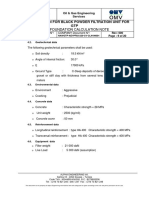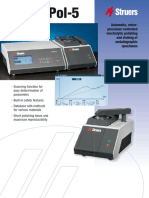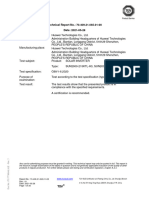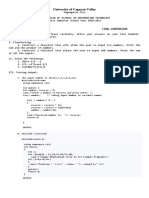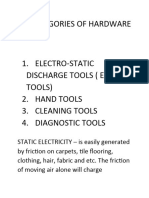0% found this document useful (0 votes)
10 views7 pagesGrammar
Grammar in the theory of computation is defined as a four-tuple (V, T, P, S) consisting of terminal and non-terminal symbols, production rules, and a start symbol. There are different types of grammar including Type-0 (recursively enumerable), Type-1 (context-sensitive), Type-2 (context-free), and Type-3 (regular), each with specific characteristics and applications in computer science. The document also provides examples of grammars and how strings can be derived from them using production rules.
Uploaded by
anandrajCopyright
© © All Rights Reserved
We take content rights seriously. If you suspect this is your content, claim it here.
Available Formats
Download as DOCX, PDF, TXT or read online on Scribd
0% found this document useful (0 votes)
10 views7 pagesGrammar
Grammar in the theory of computation is defined as a four-tuple (V, T, P, S) consisting of terminal and non-terminal symbols, production rules, and a start symbol. There are different types of grammar including Type-0 (recursively enumerable), Type-1 (context-sensitive), Type-2 (context-free), and Type-3 (regular), each with specific characteristics and applications in computer science. The document also provides examples of grammars and how strings can be derived from them using production rules.
Uploaded by
anandrajCopyright
© © All Rights Reserved
We take content rights seriously. If you suspect this is your content, claim it here.
Available Formats
Download as DOCX, PDF, TXT or read online on Scribd
/ 7






















































